Contents
Sowing seeds of alfalfa is carried out most often to obtain a good green manure. Grass improves soil composition and makes it easier to grow vegetables.
Where does alfalfa grow
Blue alfalfa (Medicago sativa) is a herbaceous plant in the legume family. It has tetrahedral stems branching in the upper part up to 80 cm above the ground and powerful, deep-lying roots. The leaves of the plant are oblong, obovate, with a solid edge, on petioles. The flowers of the sowing alfalfa are blue-violet, the fruits are beans up to 6 mm in diameter.
In its natural form, the culture is found in the Balkans and in Asia Minor, the perennial is artificially grown all over the world. Sowing alfalfa prefers to settle on grassy slopes and scree, pastures and forest edges, along the banks of water bodies.
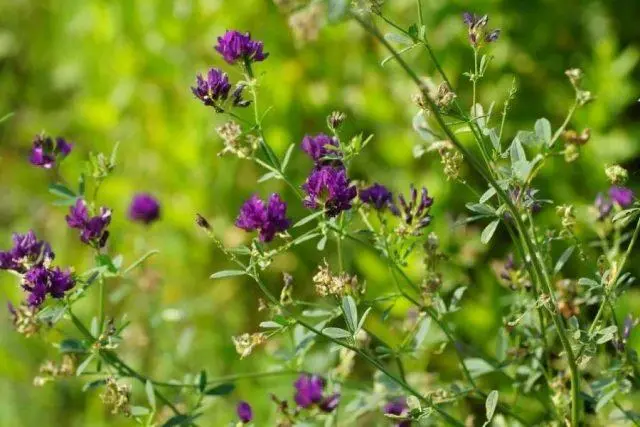
Alfalfa can be sown as a honey plant
How many years does alfalfa grow
The lifespan of alfalfa from seeds depends on the climate and quality of care, as well as on which area the grass is to be sown. But on average, a plant can develop for 4-8 years.
Sowing time for alfalfa
The timing of sowing alfalfa is determined by the climatic conditions of a particular region. In Siberia and the Urals, seeds are planted in autumn in October or September. Seedlings in this case appear soon after the snow melts in early or mid-May. If sown at the end of the season, after natural stratification in the soil, it will show a particularly high resistance to fungi and pests. Prolonged hardening increases the endurance of planting material.
In the middle lane and in the south, it is necessary to sow alfalfa seeds in mid-March after the soil has thawed. Shoots also gain strength by the end of spring or the beginning of summer.
Sowing alfalfa at home for seedlings is rarely practiced, usually the crop is planted immediately in open ground. But if desired, the grass can be grown first in closed containers. In this case, the seeds should be sown in a loose substrate in containers in early March. During the spring, seedlings are provided with basic care – seedlings are watered, ventilated and, if necessary, illuminated with a phytolamp. By May, the sprouts are transferred to the garden and placed in the soil by transshipment.
If alfalfa is to be sown with seeds in a large field, the seedling method is not recommended. Transplanting seedlings from containers into the ground will take a lot of time and effort.
What cultures does it fit with?
Alfalfa as green manure is allowed to be sown in front of many horticultural crops. Best after perennial plants develop:
- tomatoes;
- cabbage;
- turnip;
- radish;
- radish;
- oats and wheat.
It is undesirable to sow alfalfa seeds before legumes, as well as immediately after them. Plants from the same family suffer from common fungi and pests.
Preparing seeds for sowing
Before planting alfalfa manually, it is recommended to subject the plant material to a special treatment. It is carried out according to the following algorithm:
- Grind the seeds to be sown with sand to slightly damage their shell and speed up germination.
- For a day, the material is soaked in tepid water.
- Dry thoroughly before sowing.
Before sowing alfalfa seeds, they can be disinfected. To do this, prepare a bright solution of potassium permanganate or add a couple of drops of a growth stimulator to 100 ml of water. Seeds are soaked in accordance with the instructions for a period of 20 minutes to eight hours. Disinfection will speed up the emergence of seedlings and also make the culture more resistant to fungi.
Sowing rates
It is recommended to plant alfalfa in accordance with certain seed consumption rates. If the culture is to be used as green manure, the grains are planted as densely as possible. It is necessary to sow a plant as a honey plant in smaller quantities – seedlings must have room for development.
How many alfalfa seeds do you need per acre
The consumption of alfalfa seeds per 1 hectare is usually about 150 g. If the soil is moist and fertile, it is recommended to sow up to 200 g of grains. In regions with a dry climate and light soil, about 80 g of material is spent on the same area.
Seeding rate of alfalfa per hectare
Consumption of alfalfa seeds per hectare starts from 9 kg. It is recommended to sow the material automatically using special equipment. Planting a plant in large areas by hand is quite difficult, it takes a lot of time.
How to sow alfalfa at home
You can sow alfalfa by hand at home in the country according to a simple scheme. The algorithm looks like this:
- The site for green manure is preliminarily dug up.
- Organic fertilizers are added to the soil, as well as potassium and phosphorus.
- Loosen the soil with a rake and prepare small trenches.
- Water the soil thoroughly before planting alfalfa.
- They pass the field and scatter the seeds first along the beds, and then across.
The sowing depth of alfalfa should be no more than 3 cm. In most cases, the planting material is not buried in the soil at all, but simply sprinkled with the substrate on top. You can also sow seeds and then walk across the field with a special roller for embedding.

The plot for alfalfa is prepared no later than six months before planting the crop
How much alfalfa sprouts after sowing
Alfalfa seed germination rates depend on weather conditions. If you sow a crop at a temperature of about 20 ° C, it will germinate in just 5-7 days. If it is quite cold outside, the process will take about 20 days.
In general, alfalfa is considered a hardy plant. It is allowed to sow seeds in open ground already when the temperature rises to 1-2 degrees.
How to take care of plantings
Growing alfalfa in a summer cottage is quite simple. It is necessary to pay attention to several agrotechnical measures.
Watering
It is recommended to sow alfalfa from seeds, including because it tolerates short-term drought well. At the same time, the grass reacts poorly to a prolonged lack of moisture. In order for the plant to quickly gain green mass in the spring, it is necessary to provide it with enough water.
Watering alfalfa begins after the seedlings reach 15 cm in height. Plantings are irrigated with lukewarm settled water with a soft composition, the liquid is applied, if possible, under the root. Then watering is repeated during the budding period of the culture. The third time water is added after the first mowing of the plant, so that the alfalfa can recover faster.
It is allowed to refuse watering in rainy cool weather. In such a situation, the plant has enough natural rainfall, additional moisture can provoke root rot.
How to feed alfalfa
Fertilizing alfalfa is necessary for the fastest development of grass and good growth of green mass. The culture needs complex mineral supplements containing nitrogen, potassium and magnesium in the composition. Phosphate fertilizers have a beneficial effect on the state of the plant.
For the first time, top dressing is applied approximately two weeks after germination. Subsequently, the culture is fertilized twice a month. It is recommended to use liquid preparations, they are absorbed faster and better by the roots. In addition, organic fertilizers can be used for the culture – an infusion of bird droppings, a solution of mullein, wood ash.
Weeding
At the first stages of development, sowing alfalfa needs regular weeding from weeds. The procedure is carried out every three weeks until the first mowing of the grass.
In the process, it is necessary not only to eliminate weeds, but also to loosen the soil, preventing the formation of a hard crust on its surface. Good aeration of the soil accelerates the development of perennial crops and prevents the occurrence of diseases.
Alfalfa pests
When planting alfalfa in autumn and spring, care must be taken to protect seedlings from pests. Several insects pose a danger to a perennial crop:
- Bruchophagus, or alfalfa paunchy. A small black parasite up to 2 mm long feeds on seed embryos and massively attacks the plant during the flowering period.

Alfalfa pachyderm is able to overwinter inside the seeds, before sowing the material, it should be disinfected
- Alfalfa bug. The pest is a yellow-green insect with two black dots on its back, reaching a length of about 9 mm. It feeds on plant sap of shoots and leaves, causes wilting of the culture. May overwinter inside alfalfa stalks.

Alfalfa bug harms plantings in dry and hot weather
- Phytonomus, or alfalfa elephant. A gray-brown beetle up to 5,5 mm long with a dark spot on the wings eats the young leaves of the plant at the beginning of the growing season. The damaged perennial partially dries up, the yield of alfalfa seeds decreases.

Alfalfa causes the most damage in the first cut of grass
- Lucerne aphid. A small dark brown insect gives up to 15 generations in one summer, tightly sticks around the green parts of the plant. It feeds on the juice of shoots and leaves, causing their deformation and drying out. If you do not fight aphids, it can completely destroy up to 50% of plantings, since the affected stems do not tie buds and do not produce seeds.

Alfalfa aphid can become a carrier of dangerous viral diseases
- Alfalfa mosquito. The larvae of the parasite hibernate in the soil; the adult insect lays its eggs in the buds of the plant. The pest impairs the flowering of the crop and reduces its fruiting, and also slows down the growth of grass for the first and second mowing.

The mosquito often attacks alfalfa on wet soil in cold wet weather.
- Alfalfa weevil. The black beetle up to 5 cm long eats the leaves of the plant, and its larvae feed on the roots of the perennial. If left unchecked, the parasite can quickly kill alfalfa crops. Grass in case of damage to underground processes loses the ability to receive moisture and nutrients from the soil.

The alfalfa weevil lays up to 400 eggs at a time during the breeding process
Pest control can be quite difficult, especially if you sow alfalfa in large areas. Therefore, the main attention is paid to the prevention of the appearance of insects. It is necessary to treat the seeds with disinfectants before planting. It is possible to sow a plant only after deep digging and disinfection of the soil.
During the budding period, alfalfa is recommended to be treated with insecticides even in the absence of alarming symptoms. It is allowed to use Bitoxibacillin, Karbofos, Fufanon and similar drugs.
Cleaning
You can mow alfalfa from seeds on the site several times per season. If the plant is used as green manure, harvesting is carried out at the beginning of budding. In this case, the stems of the crop will not have time to become woody and will quickly disintegrate in the ground.
The last mowing is carried out in the fall about a month before the onset of cold weather. The grass is left to lie on the site until it wilts. After that, the vegetable raw materials are raked into heaps, the site is plowed up and green manure is planted in the ground for the winter. Within 5-6 months, alfalfa from seeds will rot and saturate the soil with nitrogen. When sowing plants on large areas, a tractor is used to embed green manure in the ground.
If alfalfa is to be used as livestock feed, it must be harvested in the early stages of development. You should not wait for the beginning of flowering; after the appearance of buds, the nutritional value of the culture decreases sharply. It should also be taken into account that the grass of the first cut contains more crude protein, and alfalfa of the second and third waves contains a lot of vegetable fiber.
Conclusion
Sowing seeds of alfalfa is carried out in accordance with the established norms of consumption in open ground. The procedure is allowed to be performed both in spring and autumn. It is useful to sow grass before tomatoes and cabbage, as well as before grain crops.










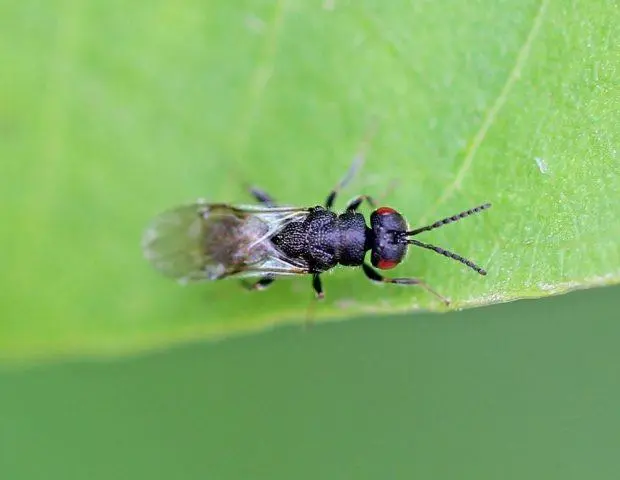

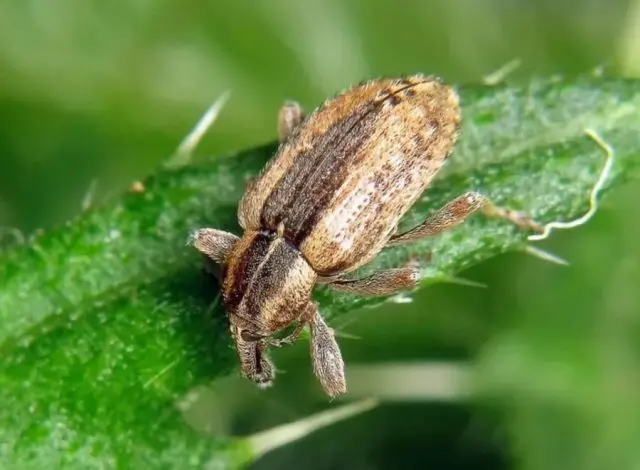
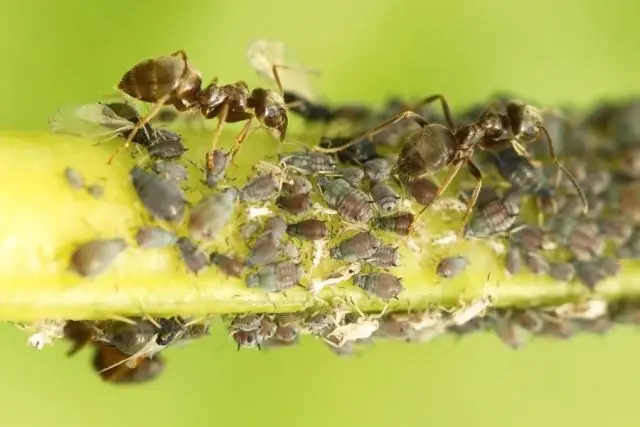

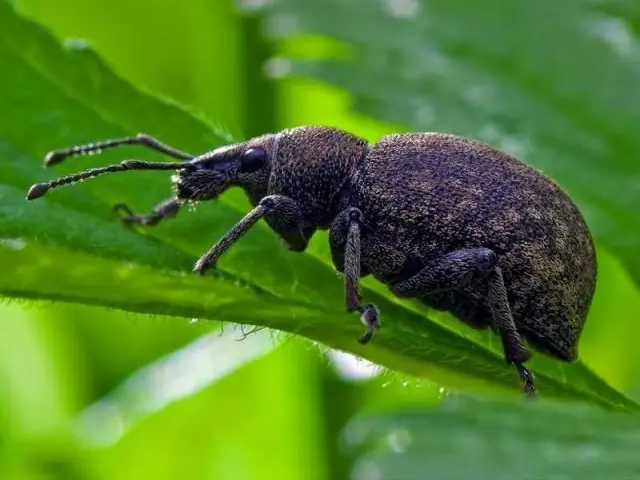
Napata wapi mbegu hizi?